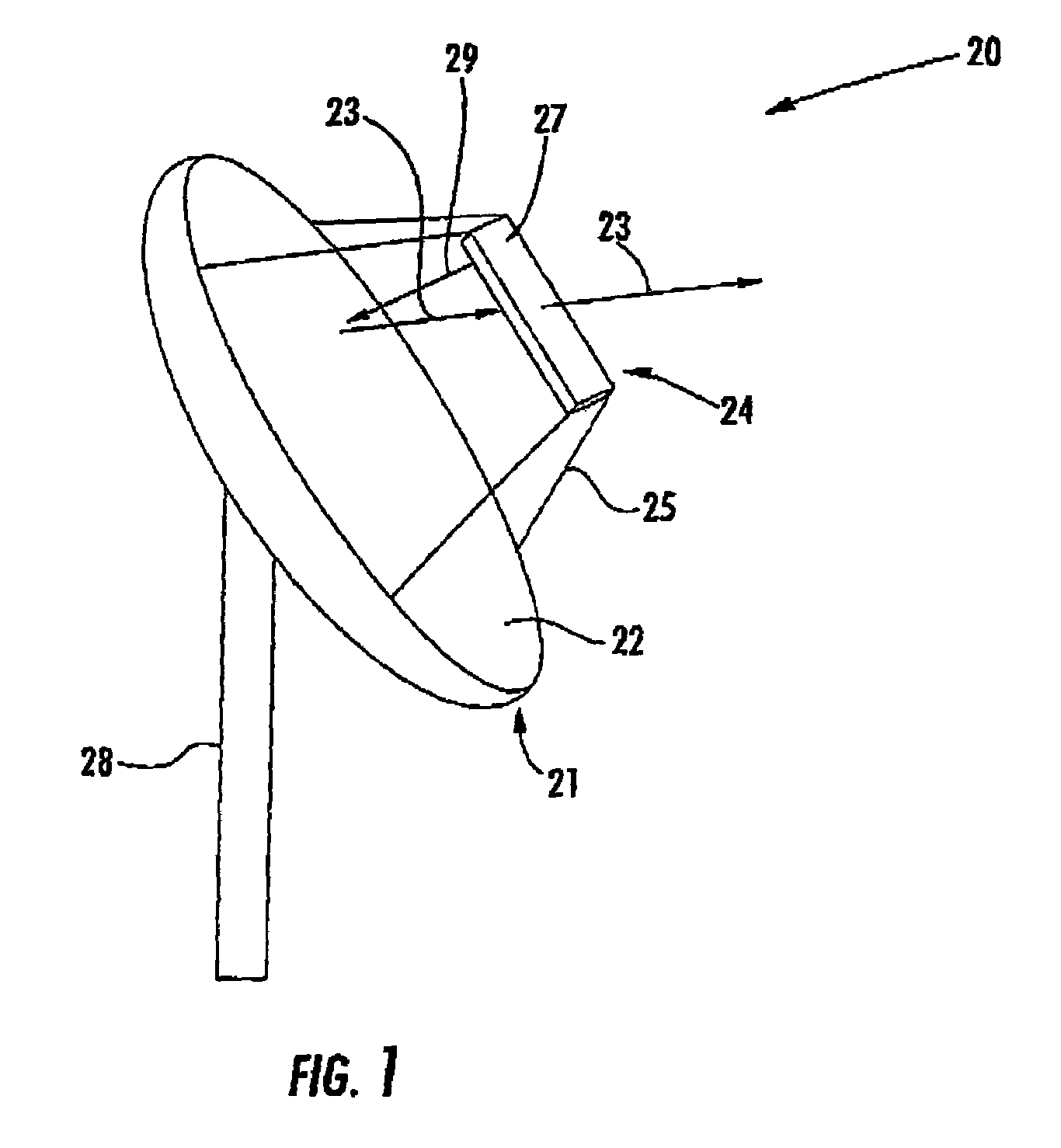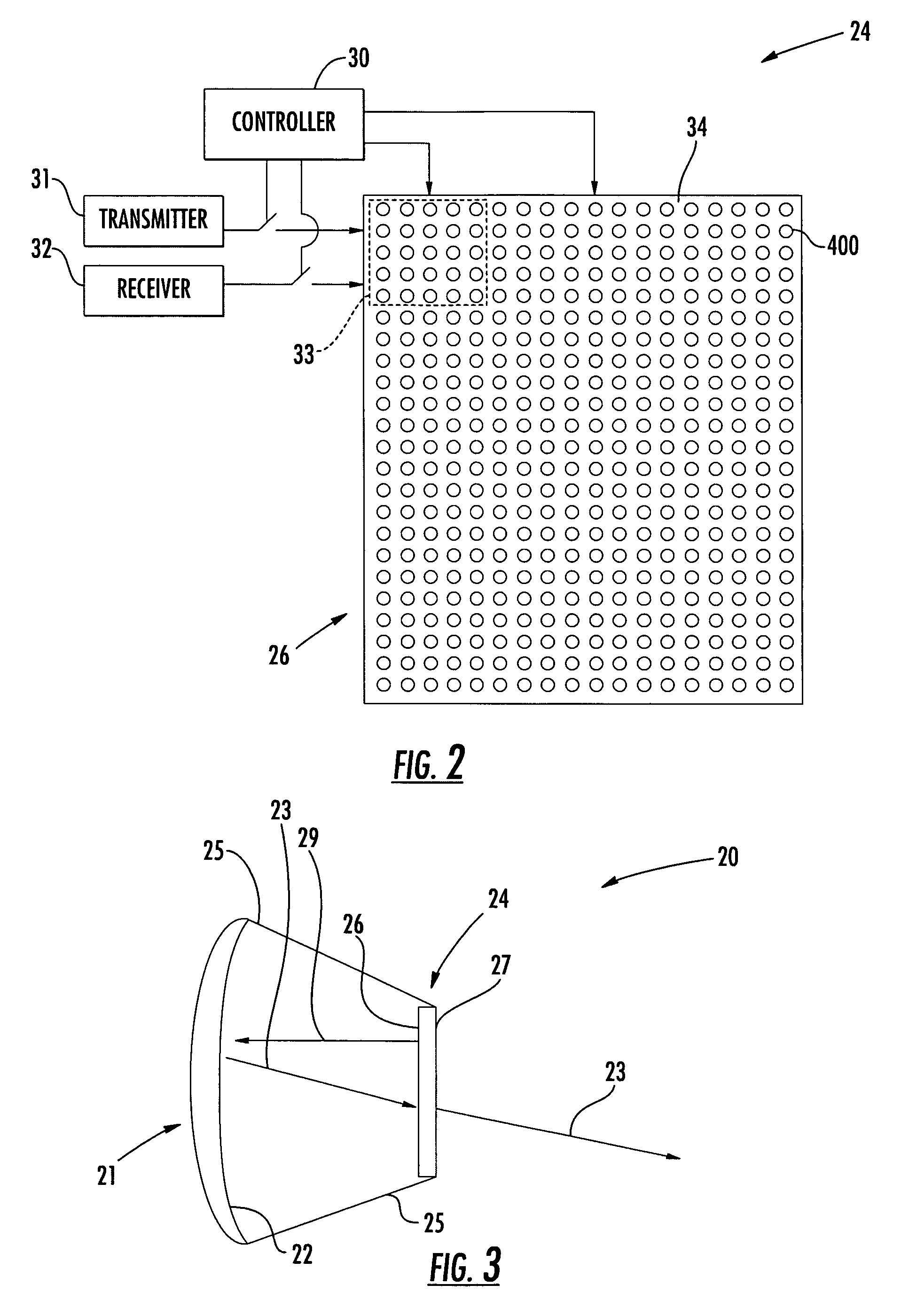Reflector antenna system including a phased array antenna operable in multiple modes and related methods
a phased array and antenna technology, applied in the field of communications systems, can solve the problems of long change time, prone to failure, and inability to adapt to changing conditions, and achieve the effect of reducing signal loss and large scan angl
- Summary
- Abstract
- Description
- Claims
- Application Information
AI Technical Summary
Benefits of technology
Problems solved by technology
Method used
Image
Examples
Embodiment Construction
[0033]The present invention will now be described more fully hereinafter with reference to the accompanying drawings, in which preferred embodiments of the invention are shown. This invention may, however, be embodied in many different forms and should not be construed as limited to the embodiments set forth herein. Rather, these embodiments are provided so that this disclosure will be thorough and complete, and will fully convey the scope of the invention to those skilled in the art. Like numbers refer to like elements throughout, and prime and multiple prime notation are used to indicate similar elements in alternate embodiments.
[0034]Referring initially to FIGS. 1 through 4, a first embodiment of a reflector antenna system 20 in accordance with the present invention is now described. The system 20 illustratively includes an antenna reflector 21 having an arcuate reflecting surface 22 for defining an antenna beam 23, as will be appreciated by those skilled in the art. Furthermore,...
PUM
 Login to View More
Login to View More Abstract
Description
Claims
Application Information
 Login to View More
Login to View More - R&D
- Intellectual Property
- Life Sciences
- Materials
- Tech Scout
- Unparalleled Data Quality
- Higher Quality Content
- 60% Fewer Hallucinations
Browse by: Latest US Patents, China's latest patents, Technical Efficacy Thesaurus, Application Domain, Technology Topic, Popular Technical Reports.
© 2025 PatSnap. All rights reserved.Legal|Privacy policy|Modern Slavery Act Transparency Statement|Sitemap|About US| Contact US: help@patsnap.com



